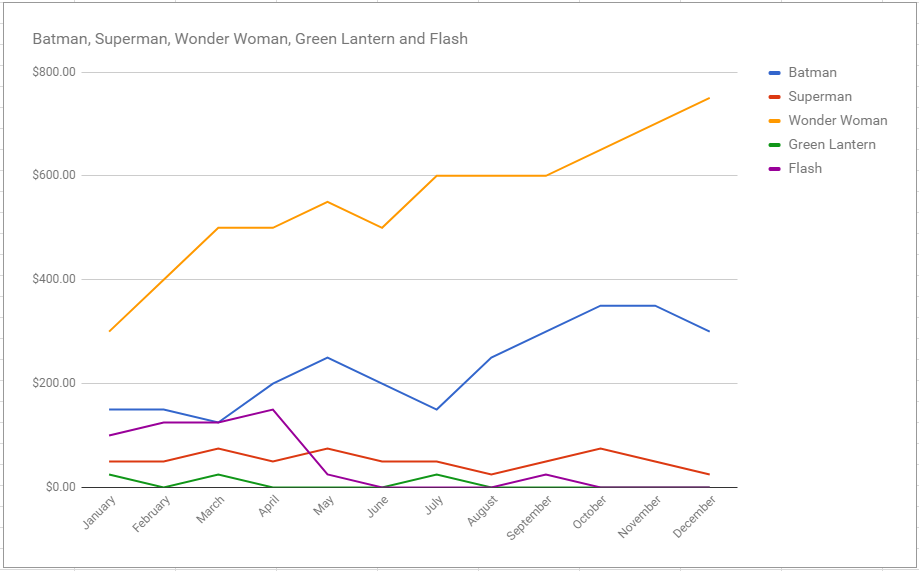We get it. Sometimes, maybe most of the time, you just don’t have the luxury of looking at all the metrics you should to know if each part of your business is performing well. And if you own an SMB, time is never on your side.
Still, this feels incredibly unsafe. Don’t do this.
So when it comes to managing the success of your affiliate marketing, you can maximize your analysis by focusing on just 3 Key Performance Indicators (KPIs) that will tell you whether things are going well, or whether you need to right the ship. Let’s break these three KPIs down.
1. eEPC: Effective Earnings Per Click
The eEPC is the king of all metrics in affiliate marketing. This is because, at a glance, this one number shows you how well each affiliate is performing per 100 clicks. Here’s the calculation:
($NetCommissionsEarned ÷ Total Clicks) x 100 = eEPC
Example: Each of your affiliates earn $10 for each sale through their affiliate link. Affiliate Wonder Woman sold 55 products from 100 clicks, and Affiliate Superman sold 65 products from 170 clicks. Both had 5 returns (refunds) during the same period of time.
Wonder Woman:
$NetCommissionEarned: (55 – 5) x $10 = $500
Total Clicks: 100
eEPC: ($500 ÷ 100) x 100 = $500.00 eEPC
Superman:
$NetCommissionEarned: (65 – 5) x $10 = $600
Total Clicks: 170
eEPC: ($600 ÷ 170) x 100= $352.94 eEPC
Once you’ve done the math, you can see at a glance that though Superman generated more sales, Wonder Woman has a higher eEPC and is overall more efficient. This is great information since you now know you should help Superman optimize his methods to increase his eEPC.
Not only does the eEPC show you which affiliates are currently more valuable, but also the ones that have the most potential. We recommend you set an eEPC threshold and flag the affiliates that fall under it. Then you’ll have a prioritized list of who to optimize to increase your affiliate marketing revenues.
2. Total Revenue by Affiliate
This next KPI is probably the most obvious one. By trending over time the total revenue earned by affiliate, it’s a 50,000 foot view of the health of your marketing.
The important thing here is visually graphing the trend of total revenue so, at a glance, you can see whether there are major problem areas with any specific partner.

Ideally, you should create a dashboard (via Excel, or other means) that is kept up-to-date; and make it part of your weekly routine to monitor for peaks and valleys. This way, you won’t lose the forest for the trees. This is a big-picture KPI, and a quick way to get a pulse on your affiliates.
3. Average Order Value (AOV)
The Average Order Value metric is a great one to keep track of to evaluate both customer behavior and the efficiency of your affiliates. Since we’re already looking at revenue, this ratio of revenue-to-orders works as a barometer of how well your affiliate marketing is working.
Revenue ÷ Number of Orders = AOV
This KPI is especially handy if you have multiple products of varying price. Since it’s often difficult to increase impressions or clicks, you can focus on getting the AOV up instead. An affiliate with a low AOV may just need a tweak to his/her strategy to increase sales of higher-priced items.
For example, an upsell offer such as “how about these premium headphones that are just $15 more than the ones in your cart?” would be an offer that would preserve the sale but increase the revenue. Or perhaps you could offer free shipping if the shopper hits a certain spend threshold.
By monitoring AOV, you can help affiliates optimize the shopper at point-of-purchase, which is usually much easier than acquiring new customers. So keeping an eye on AOV can help you spend less and earn more per transaction.
The Bottom Line
That’s it! Just 3 KPIs for better affiliate marketing success. Of course there are many other metrics you can track such as percent of affiliates with recent activity, return on ad spend, or something as simple as just click-throughs off affiliate links. But with limited time and resources, we recommend starting with these three metrics to get the best bang for your metric buck. And if you really love numbers, there are great ways to slice and dice your affiliate data to get you even more insight.



